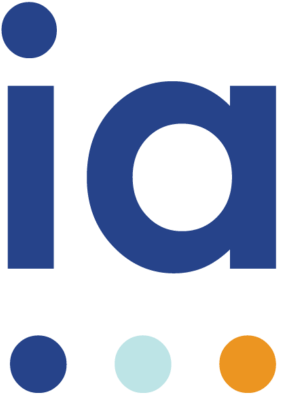Employee Experience
As we at IA observe what is happening in the world with COVID-19 restrictions – including stay-at-home orders, closing non-essential businesses, and other disruptions – we, like many others, immediately thought, “What can we do to help?”
IA is sharing a number of resources for free and has opened up office hours for anyone who wants to schedule time to talk to one of our advisors. But inevitably, we also started thinking about how this unprecedented situation may be impacting businesses now and in the future. IA’s managing principals – Mark Stelzner, Kimberly Carroll, and Jason Carroll – recently sat down to share their insight around what they are seeing and what they think the future might hold once society begins to operate in the new normal.
You can watch the full conversation, or read the written summary below.
Question 1: What changes have you seen and heard about since the stay-at-home recommendations came out?
The team had some surprising answers to this one, including seeing more people leading with empathy, focusing more on human connection and trying to understand the key concerns of the individual. Yes, business outcomes are still important, but there is more discussion around how people are really doing. Additionally, the team mentioned that no one was really prepared. Even for those organizations with a detailed disaster recovery plan, this situation has really exposed gaps in those plans. And to explore preparation challenges further, they pointed out that the collapse of the supply chain is an area that indicates how quickly suppliers needed to respond but couldn’t. The shift in demand and need for agility will result in needing to rethink approaches.
Question 2: How do you think businesses will be forced to change once the restrictions have been lifted?
First and foremost, the focus was on the challenges some industries will face as they phase in services again under potential distancing restrictions – can you keep people apart on a plane or in a restaurant? And will people really want to travel right away? They also questioned whether in-person conferences will be as prevalent going forward. And they touched on the reality that businesses may choose to maintain a smaller real estate footprint moving forward, limiting the number of on-site staff and reducing costs. It could mean business travel is reduced and virtual sales and project meetings will prevail – and what will that look like moving forward? Can we adapt?
What really stood out with this question was the idea of “essential” vs “non-essential” and what that really means not just for a business, but for a society. Will we refocus and reprioritize roles in a business? And given the fact that so many businesses have been able to accommodate shifting conditions so quickly, it has raised the question about why there were so many false obstacles obstacles erected around disability requests.
Question 3: What are some of the recent changes that you hope businesses will keep and continue to make after the current crisis has passed?
The idea of personal preference came up for virtual work – not everyone likes it, and not everyone can successfully do it. So hopefully businesses will find a way to build flexibility into their working model. And in general, the team hoped for more focus on employee-friendly policies, that businesses will build on the minimal requirements of emergency legislation and build leave policies that take into account the reality of life. The team also hopes that those frontline “unseen” workers are seen for what they are doing right now. Too often, executives don’t know the reality of the frontline employees, and now they are front and center of keeping essential services up and running. How are businesses going to manage them going forward, from pay, to benefits, to safety nets, to all of it. It’s a rare opportunity to fundamentally recreate the way we think about people and work.
Question 4: What advice they have for leaders who are working through this situation right now?
The team recommended leaders seize the opportunity to make real, lasting changes to processes and policies. Start making incremental changes now in preparation for bigger changes that may be coming. They also advocated increased transparency and candor. People need to trust their leadership and nothing tests trust like a crisis. Leaders need to think through every possible scenario and be prepared for three to five potential paths the business might take, and then share that information with employees – regardless of whether the news is good or hard to take. Finally, the team advised leaders to remember their employees still need connection. Be intentional about reaching out and go deeper than a typical “how are you?” Still ask the question, and mean it. Offer to help if you can; find someone who can help if you are unable to.
Continue the conversation
Thank you to Mark, Kimberly and Jason for sharing their thoughts about how businesses and leaders are navigating the current crisis. If you are interested in scheduling time to chat with anyone mentioned in this post, you can do so by clicking one of the links below:
– To schedule time with Mark Stelzner, click here
– To schedule time with Kimberly Carroll, click here
– To schedule time with Jason Carroll, click here







Pingback: May 2020 Leadership Development Carnival - Lead Change